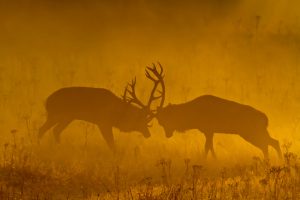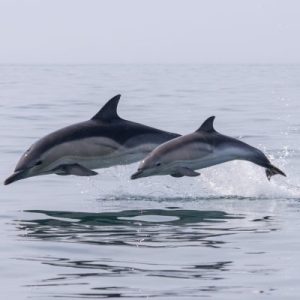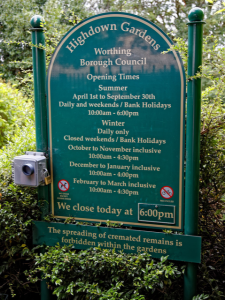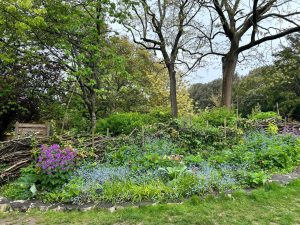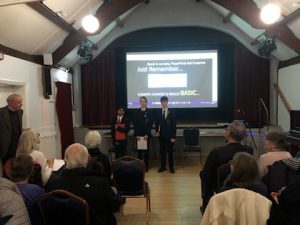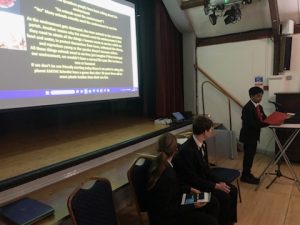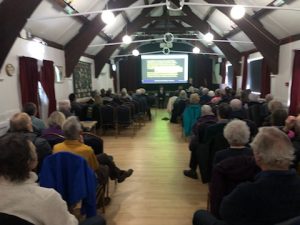Ferring Conservation Group were privileged to welcome Sussex Underwater (Eric Smith accompanied by his daughter Catrine Priestley) to their March meeting to enthral members with their enlightening presentation together with beautiful film footage of the results of the successful campaign to rejuvenate the local underwater kelp forest.
It was apparent right from the start what a special relationship Eric and Catrine have with the narration slipping seamlessly between them as they began to set out the chain of events that resulted in this remarkable success.
Eric’s story began in 1959 at just 11 years old, kitted out with just a diving mask and snorkel purchased for 10 shillings from Woolworths, Eric began free diving off the Sussex coastline. During his initial dives he was mesmerised by the abundance of marine life including European Sea Bass, Black Sea Bream, European Lobster and Common Cuttlefish. Sadly, by the end of the century 96% of the kelp had disappeared along with the marine life it supported.
The great storm of 1987 and intensive fishing using heavy trawl nets, which were dragged along the seabed in the area and destroyed the seabed habitats, were mostly to blame. Even before these events Eric was greatly troubled at what he saw – in his words ‘this garden of Eden’ gradually being destroyed, and had begun campaigning tirelessly highlighting the damage this was causing and was later joined by his daughter Catrine. Eric still feels emotional today when he looks back and remembers seeing the bottom of the sea devoid of life and the Sussex underwater kelp forest virtually wiped out.
It wasn’t until 2021 that a new bylaw – supported by none other than Sir David Attenborough – banned trawl fishing in more than 100 square miles of seabed off Sussex. Encouragingly this has resulted in a great improvement of a healthy kelp ecosystem, providing an ideal nursery for juvenile fish and rare sea bream breeding on the sea bed again. This local story is of great importance not only to the UK but internationally too.
A BBC One programme ‘Our Lives; Our Kelp Forest’, (narrated by Chris Packham and now available on BBC iPlayer) outlined this amazing journey – filmed over three years this shows incredible scenes of Eric diving with giant 40-pound stingrays as well as witnessing the return of the mussel beds and is definitely worth watching.
To conclude the meeting Ed Miller took to the floor to update members with planning news:
The Certificate of Lawful Entitlement along with a Premises Licence have both been refused by Worthing BC in regard of the land on the north side of Marine Drive, Goring-by-Sea. The planning application for 47 houses at Kingston Lane, East Preston has been approved by Arun DC and a new application has been submitted for a bungalow to be built in the back garden of an existing property in Sea Lane, Ferring.

